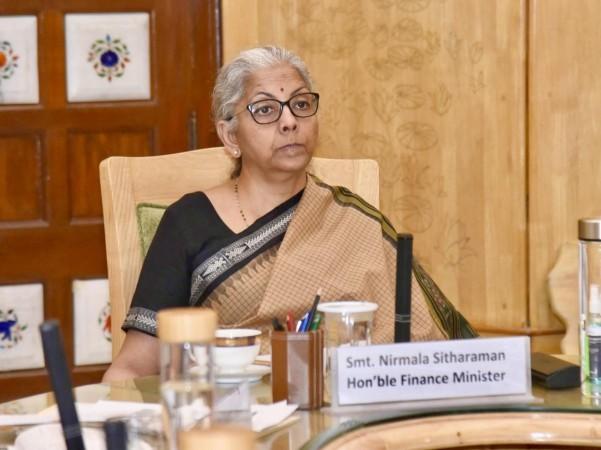
As India stands at a pivotal moment in its economic journey, the announcement of the NextGen Goods and Services Tax (GST) reforms, set to be implemented by Diwali 2025, signals a bold step toward simplifying and strengthening the nation's tax system. Unveiled by Prime Minister Narendra Modi during his Independence Day address on August 15, 2025, these reforms aim to overhaul the existing GST framework, introduced on July 1, 2017, by streamlining tax slabs, addressing structural inefficiencies, and fostering inclusive growth. This op-ed delves into the multifaceted dimensions of the NextGen GST reforms, analyzing their design, stakeholder perspectives, economic implications, and long-term significance for India's ambition to become a developed nation by 2047.
"The NextGen GST reforms are a structural reengineering of India's tax system, designed to fuel economic growth and empower every citizen."—Prime Minister Narendra Modi
The current GST system, with its four primary tax slabs (5%, 12%, 18%, and 28%) and special rates for niche goods, has been a cornerstone of India's economic integration since its inception. It replaced a labyrinth of central and state taxes, doubling the indirect tax base to 1.52 crore businesses and fostering a unified national market. However, its complexity, particularly the multi-slab structure has led to administrative burdens and revenue inefficiencies. For instance, the 12% slab contributes only 5% of total GST revenue, while the 18% slab accounts for 65%, highlighting a disproportionate fiscal yield.
The NextGen GST reforms propose a radical simplification, reducing the tax structure to two core slabs, 5% for essential goods and 18% for standard goods and services alongside a 40% rate for luxury and sin goods like tobacco, alcohol, and online betting. This restructuring aims to make 99% of items in the 12% slab and 90% of those in the 28% slab more affordable, directly benefiting consumers and businesses.
"Simplifying GST slabs to two rates is a game-changer for compliance and economic efficiency." —Nirmala Sitharaman, Union Finance Minister
The reform's three pillars, structural overhaul, rate rationalization, and ease of doing business, address longstanding pain points. A critical structural fix is the correction of inverted duty structures, where input taxes exceed output taxes, causing working capital bottlenecks for manufacturers. By streamlining input tax credit (ITC) access, the reforms enhance the competitiveness of Indian products, aligning with the Atmanirbhar Bharat mission to bolster domestic manufacturing. For micro, small, and medium enterprises (MSMEs), which account for 45% of India's exports, simplified compliance through pre-filled GST returns and faster refunds will reduce operational costs.
The World Bank notes that India's GDP growth, averaging 6.3% from 2000 to 2024, could accelerate to 7.8% annually to achieve high-income status by 2047, and these reforms are a critical enabler. By lowering tax rates on essentials like packaged foods, personal care items, and agricultural inputs, the reforms aim to boost consumption, particularly among low- and middle-income households.
"These reforms will make Indian businesses more competitive globally, driving investment and growth."—Auguste Tano Kouamé, World Bank Country Director
From a consumer perspective, the reforms promise significant relief. Items such as butter, hair oil, toothbrushes, and small FMCG sachets (priced at Rs. 10 or less) will shift to the 5% slab, reducing costs for the common man. Women stand to benefit from lower taxes on personal care products, while students will see reduced rates on educational materials. The middle class will gain from the shift of consumer durables like electronics and white goods from 28% to 18%, making modern amenities more accessible. Farmers, a vital demographic, will benefit from lower taxes on agricultural inputs, enhancing rural economic resilience. However, the introduction of a 40% rate for sin and luxury goods has sparked debate. Critics argue it may fuel black-market activities for high-tax items like tobacco and alcohol, though proponents counter that it aligns with global practices of taxing demerit goods heavily to curb consumption and boost revenue.
"The focus on inclusive growth through tax relief for essentials is a step toward equitable prosperity." —Sanjeev Sanyal, Economic Advisory Council to the Prime Minister
Businesses, particularly MSMEs, view the reforms as a lifeline. The simplification of slabs and compliance processes addresses the administrative complexity that has long plagued small enterprises. Pre-filled returns and streamlined MSME registrations will reduce the compliance burden, which currently costs small businesses an estimated 2-3% of their revenue annually. Industry experts predict that rationalizing rates and fixing inverted duty structures could lower production costs by 5-7%, enhancing export competitiveness. However, large corporations in sectors like luxury goods and tobacco may face challenges due to the 40% slab, potentially impacting their profit margins.
The Confederation of Indian Industry (CII) emphasizes that these reforms could catalyze India's growth in a geopolitically uncertain world, where global trade growth is projected to slow to 3.3% in 2025, according to the International Monetary Fund.
"NextGen GST reforms will empower MSMEs, the backbone of India's economy, to thrive in a competitive global market." —Chandrajit Banerjee, Director General, CII
The reforms also carry significant fiscal implications. The GST system's revenue-neutral design in 2017 ensured states' fiscal autonomy, but complexities have led to revenue leakages. The shift to two slabs is expected to streamline revenue collection, with the 18% slab projected to remain the largest revenue generator. The 40% slab for sin goods could add an estimated Rs. 50,000 crore annually to the exchequer, offsetting potential revenue losses from rate reductions. However, states reliant on taxes from high-consumption goods may face short-term revenue dips, necessitating robust compensation mechanisms.
The 56th GST Council meeting, chaired by Finance Minister Nirmala Sitharaman on September 3, 2025, underscored the need for a balanced approach to protect state revenues while advancing reforms.
"A simplified GST structure will enhance revenue efficiency and fiscal stability." —Arvind Subramanian, Former Chief Economic Advisor
Globally, the reforms position India as a leader in tax modernization. The OECD's Regulatory Policy Outlook 2025 highlights the importance of streamlined regulations for economic resilience, and India's GST 2.0 aligns with this principle. By reducing tax slabs and enhancing compliance, India draws parallels with countries like Singapore and New Zealand, known for their efficient tax systems. However, challenges remain. The transition to a two-slab system requires meticulous implementation to avoid supply chain disruptions. Businesses will need time to recalibrate pricing and inventory systems, and the government must invest in digital infrastructure to support pre-filled returns and real-time compliance monitoring. The risk of tax evasion in the 40% slab also calls for strengthened enforcement mechanisms.
"India's GST reforms could set a global benchmark for balancing simplicity and revenue generation." —Kristalina Georgieva, Managing Director, IMF
Looking to the future, the NextGen GST reforms are a cornerstone of India's ambition to achieve developed-nation status by 2047. By fostering consumption, easing business operations, and enhancing fiscal efficiency, they address both immediate economic needs and long-term structural goals. Yet, their success hinges on execution. The formation of a task force to modernize laws and policies, as announced by Modi, signals a commitment to sustained reform. However, the absence of deeper structural changes in land and labor markets, as noted by Sanjeev Sanyal, suggests a cautious approach that may limit transformative impact in the short term. The reforms must also navigate geopolitical uncertainties, including potential global trade slowdowns, which could dampen export-driven growth.
"Execution will determine whether these reforms become a catalyst for India's economic leap." — Raghuram Rajan, Former RBI Governor
Overall the NextGen GST reforms represent a bold reengineering of India's tax landscape, balancing simplicity, inclusivity, and economic competitiveness. By addressing structural inefficiencies, reducing consumer costs, and empowering businesses, they lay the groundwork for sustained growth. Yet, their success depends on robust implementation, stakeholder consensus, and adaptability to global economic shifts. As India strides toward 2047, these reforms could redefine its economic narrative, positioning it as a global leader in tax policy innovation. The world watches as India takes this transformative leap, with the potential to reshape its economic destiny.
[Major General Dr Dilawar Singh, a Ph.D. with multiple postgraduate degrees, is a seasoned expert with over four decades of experience in military policy formulation and counter-terrorism. He has been the National Director General in the Government of India. With extensive multinational exposure at the policy level, he is the Senior Vice President of the Global Economist Forum, AO, ECOSOC, United Nations. He is serving on numerous corporate boards. He has been regularly contributing deep insights into geostrategy, global economics, military affairs, sports, emerging technologies, and corporate governance.]

















